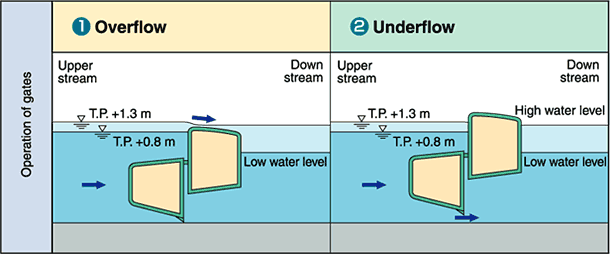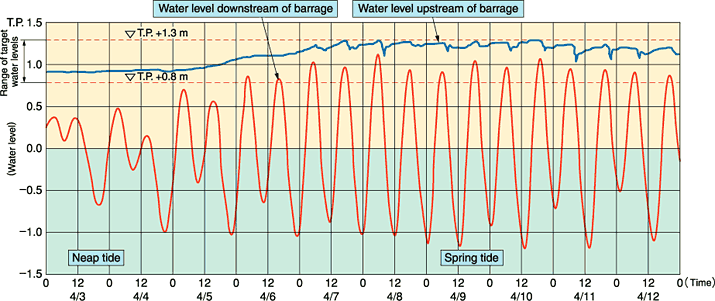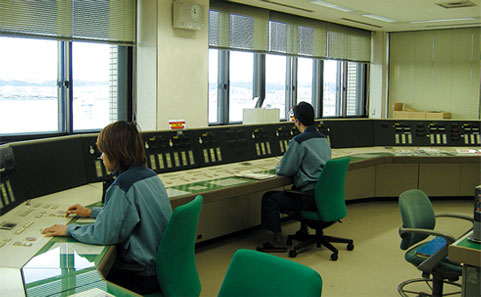Operation at Ordinary Time
At ordinary times, overflow operations to let the water flow over the gates (![]() ) and underflow operations to raise the lower gates for the water to flow under the gates (
) and underflow operations to raise the lower gates for the water to flow under the gates (![]() ) are carried out with consideration to preserving the river environment. These operations should be carried out only after filling the attraction-flow-type fishway and the lock-type fishway with the necessary amounts of water.
) are carried out with consideration to preserving the river environment. These operations should be carried out only after filling the attraction-flow-type fishway and the lock-type fishway with the necessary amounts of water.

The upper limit of the upstream river level is set at T.P. +1.3 m, which is 0.1 m higher than the average high water level on the 1st and 15th days of the lunar month, i.e., T.P. +1.2 m. It is expected to be controlled basically within a range of up to T.P. +0.8 m, and the difference in water level between upstream and downstream is reduced as best as possible in accordance with the condition of flow so as to lower the upstream level.
Meanwhile, when the water level downstream of the barrage is higher than expected and the risk of saltwater intrusion arises, the gates are closed off completely.
When the adjustment gates are operated, close attention is to be paid to fish traveling upstream or downstream. For example, gates that are closed to the fishways are given priority when water is allowed to flow down in order to enhance the inducing effect on the fishways.
Operation in normal times (April 2005)


Operating room of the management office
The management office located on the left bank is responsible for managing the Nagara Estuary Barrage. Although the gate operation is automatically controlled on the basis of such data as the river levels upstream and downstream of the barrage, the inflow rate, etc., operators work around the clock in the operating room in monitoring and controlling activities.